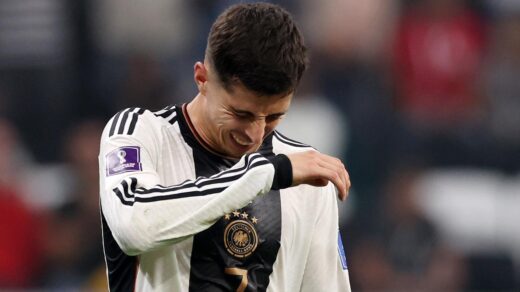The FIFA Club World Cup landed on American soil this month, and has been headlined by the European giants involved.
And yet, the stars of the show – the teams who are giving the revamped tournament the most life – are from neither continent.
Instead, it’s a South American takeover of the club football frenzy that’s been one of the biggest talking points from its expanded group stage.
Watch every game of The 2025 FIFA Club World Cup LIVE on Kayo Sports | New to Kayo? Get your first month for just $1. Limited time offer.
While it’s hard to ignore that some of the matches have been poorly attended Stateside, it must be noted just how well others have, with South American teams in particular lighting up the tournament with an undeniable passion.
For example, more than 60,000 fans filled Miami’s Hard Rock Stadium for Boca Juniors’ showdown with Bayern Munich, while its match against Benfica drew a similar figure.

The tournament opener in Los Angeles between Atletico Madrid and Paris Saint-Germain saw more than 80,000 fans in attendance, while the tournament average has sat around 36,000.
While games not featuring a European giant have pulled smaller crowds, they have often packed far more punch than their numbers might suggest.
READ MORE
Huge prizemoney boost as Kiwi part-timers pull off million-dollar Club World Cup miracle
Stunning choke books Messi reunion with former side as first big domino falls — CWC Wrap
Look no further than the stories of Botafogo and Palmeiras as evidence of this.
Both Brazilian teams booked their passages through to the Round of 16 in front of smaller crowds of around 22,000 and 32,000 respectively. But their sets of supporters contributed to a chaotic atmosphere for both matches that showcased why this tournament truly matters – even if it doesn’t for every club equally.
“We should celebrate because, before the tournament started, everyone thought we had no chance against two top opponents from major European leagues,” Botafogo captain Marlon Freitas said. “We’ve shown the value of Brazilian football. We are champions of South America, and we deserve respect.”
Coach Renato Paiva added: “We did what no one expected. We have to thank the Botafogo fans, and we have to be proud for Brazilian football.”
You’ll hear it in the stands and see it in the vision elsewhere, too. River Plate fans have belted out songs in Seattle, and Flamengo supporters roared during individual player introductions.
This enthusiasm extends beyond the stadiums, too.
Miami’s beaches and New York’s Times Square have been awash in a sea of team colours and chants. Social media is flooded with Boca Juniors supporters celebrating along the Florida coast, while Palmeiras supporters have been seen lighting up Manhattan.
True, this excitement has been aided by the fact that South American teams are not just making up the numbers, but are performing well.
At the time of writing, all six CONMEBOL clubs have avoided defeat in their opening matches, with the exception of Boca Juniors’ loss to Bayern Munich and Botafogo’s 1-0 loss to Atletico Madrid. Even so, the latter defeat was not enough to deny Botafogo a Round of 16 berth.
It’s important to note that South American and the American clubs are benefiting from their familiarity with high temperatures, high humidity, and dramatic changes in climate.
While European teams start the tournament exhausted after a long season, many South American teams are in the middle of their seasons.
Furthermore, their experience with long trips from continental competitions like the Copa Libertadores gives them an additional advantage over European competitors.
“I’m not just paying lip service to this whole thing,” Fluminense coach Renato Gaúcho said.
“We play to win.”
As such, it isn’t a huge surprise that this tournament feels undeniably South American.
Many of their UEFA counterparts are arguably less concerned with winning the expanded tournament. But teams from other regions have the crucial chance to benefit from massive prize funds and the opportunity to find greater international legitimacy.
In South America, this tournament also provides an opportunity to recapture some of the past glories. For example, Palmeiras won the Copa Rio title in 1951 after beating Nice, Red Star Belgrade, and Juventus. It was the first intercontinental club tournament featuring teams from Europe and South America. Later, Flamengo captured a dominant triumph over Liverpool in the 1981 Intercontinental Cup. The win is still celebrated today, with fans knowing the dates by heart, while its legend has been solidified by the team’s chants and banners.
These historic moments embody a rich footballing heritage that South American teams are eager to revive.
CHANCE TO SEND A MESSAGE
The explosion of the financial power of European clubs in the modern era has meant South American clubs have been regularly forced to part ways with their most talented players early, only later to watch them soar to stardom overseas.
As such, the Club World Cup also offers a chance to send a statement to the world, even if it proves merely symbolic.
“Players who used to play in our team are now playing in Liverpool, Manchester United, etc,” noted Marcelo Gallardo, coach of River Plate which has seen the likes of Julián Álvarez, Radamel Falcao, and Alexis Sánchez come through its system.
“We see them with the bright lights of playing in Europe, but kind of forget what it’s like playing in South America. We’re eager to play those teams and show that we still have it, even though our best players immigrate to Europe.”
Auckland City grab famous point vs. Boca | 03:52
While there will be no stopping their best prospects being poached – the CWC will even put them in the shop window – there’s no denying the financial incentives for South American clubs at the tournament are great. Prize money earned paired with increased exposure means these teams can invest in infrastructure, player development, and overall club growth to at least marginally reduce the gap with European powers.
The Club World Cup is an opportunity too good to miss, with each team sharing from a A$1.5 billion prize pool for participating and able to collect around A$190 million if they win the title.
Even so, Fluminense coach Gaúcho remained aware of the painful reality that still exists.
“It’s like what I said about going shopping,” he said in his pre-match remarks on Monday. “What do you want, lobster? What do you want, shrimp? You can’t get it for a fiver, right? And that’s the difference. Financially speaking, they can get whoever they want. They can sign whoever they want because they have the money … People want the omelette but they won’t give you the eggs to make an omelette.”
But that won’t stop the fans from enjoying the party on the world stage while it lasts.
The United States is home to a large community of South American fans who, even thousands of kilometres from their stadiums, do not stop following their beloved teams.
And when those teams come “close to home,” everything turns into a collective celebration.
“It’s not only a pleasure and an opportunity to see Boca Juniors playing nearby, but also a source of pride to compete with some of the most respected teams around the world. It brings Boca back to the international stage,” said Mariano Bossana, the president of the Boca Juniors Consulate in Washington, D.C.
“It means a lot for us who have been abroad for a long time.”
Messi’s Miami STUNNED by 2 late goals | 04:02
Meanwhile, for other fans, the tournament goes well beyond football. Its role in nurturing shared memories and reinforcing cultural identity must be acknowledged.
Renato Silva, a Flamengo fan residing in Rio de Janeiro, is embarking on a journey to the tournament accompanied by three generations of his family, including his father and son.
“It’s very special, especially for me. I’m going with three generations, with my dad, who is a big Flamengo supporter, and also my oldest son. It’s three generations of being Flamengo,” Silva said.
“For us, it’s very important. These are always part of conversations in society.
“I think it’s much more important for us than European teams.”
Being at the CWC is also an opportunity for these clubs to expand and reach new fans whilst they are on the international stage.
Botafogo has a space located near Venice Beach called Venice House, where it hosts events, and supporters can visit.
“Botafogo House will be a special place to honour everything we’ve built here,” club chief Thairo Arruda said in a statement. “We want to share our essence and show everyone what it is to be Botafogo.”
In addition to on-site activities, clubs are also trying to reach new supporters online. River Plate launched their English-language social media channels under the River Plate Global umbrella just before heading to the US for the tournament.
“The path is to keep making River grow in all dimensions, so that participating in the Club World Cup isn’t an arrival point but rather another step in a sustained project to consolidate River among the great clubs of the world,” secretary general of River Plate Stefano Di Carlo said.



